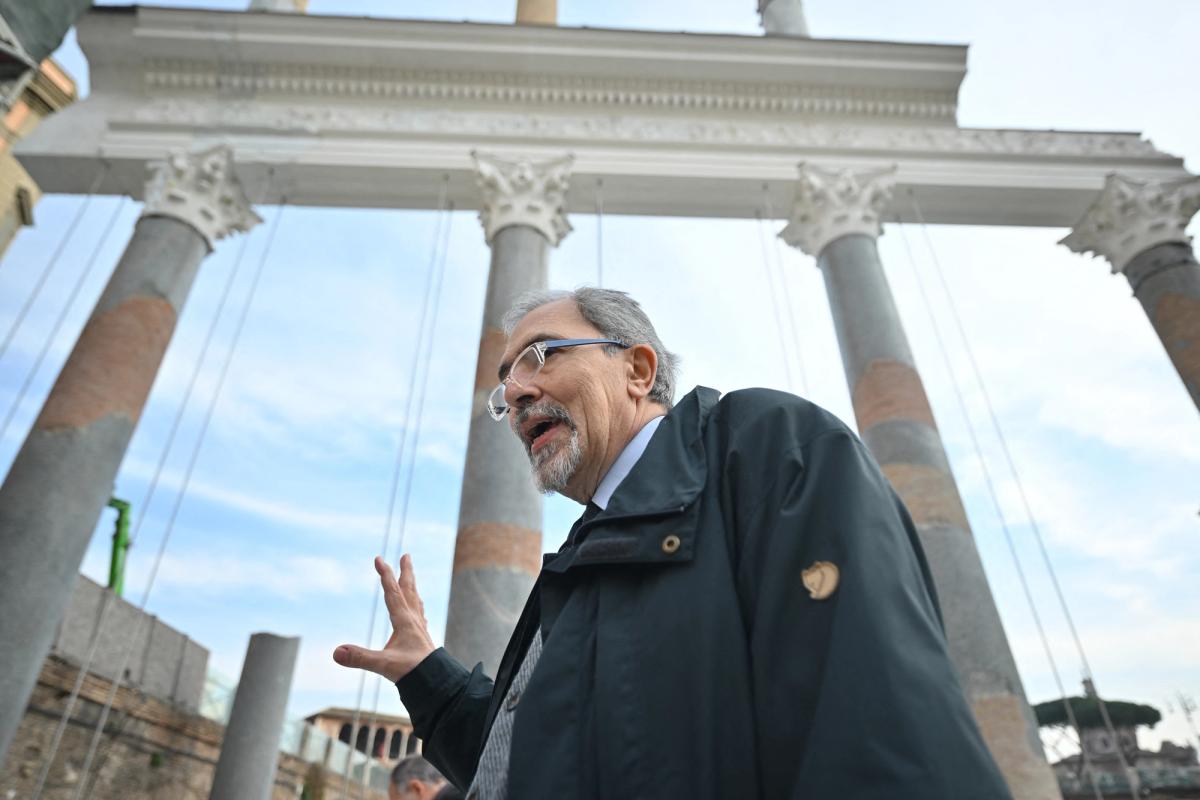A section of the Basilica Ulpia that once towered above Ancient Rome has been reconstructed to give visitors a sense of its original dimensions. The 23m-tall re-creation has been called “embarrassing” by Italian media because it was paid for by a now-sanctioned Russian oligarch.
Once the centrepiece of Trajan’s Forum, the enormous second-century basilica was once the largest in the ancient city, housing civil and criminal courts, and had a sweeping central nave covered with a bronze roof. The basilica collapsed during the Middle Ages but was unearthed by excavations in the early 19th century and the 1930s. While visitors had been able to see just a single row of columns since then, archaeologists and technicians from Rome’s cultural heritage department have added a second tier, in a project financed by a €1.5m donation made in 2015 by Alisher Usmanov, an Uzbekistan-born naturalised Russian. The Official Journal of the European Union stated in 2022 that Usmanov “has been referred to as one of Vladimir Putin’s favourite oligarchs”.
The heritage experts used segments of frieze from the original entablature depicting winged victories sacrificing bulls, which are now kept in warehouses and museums, to re-create a new version. The reconstructed section was placed on four granite pillars that mark the outer perimeter of the basilica’s first nave. Three green marble pillars that had stood propped in a corner of the site for almost 100 years were then hoisted on top of the new entablature. Claudio Parisi Presicce, Rome’s top official for cultural heritage, told AFP: “If visitors can’t sense the height of the monuments, they won’t understand the meaning of the architecture.”
Usmanov, who was estimated by Forbes last year to possess a $14.4bn fortune from metals and mining, has funded other art restoration projects in Rome, including €300,000 to restore frescoes in the Orazi and Curiazi Hall at the Campidoglio. He was sanctioned by the European Union and the US following Russia’s invasion of Ukraine.
Newspaper La Repubblica said that the Trajan Forum project’s links with Usmanov were “embarrassing”, claiming its inauguration shortly before Christmas was kept deliberately low-key to avoid drawing attention. Speaking to AFP, Claudio Parisi Presicce, the superintendent of cultural heritage at the Capitoline Museums, brushed aside questions about the donation, emphasising it was made before Usmanov was sanctioned.
The project’s aesthetics have been equally divisive. Bruno Zanardi, an art historian who previously taught restoration at the University of Bologna, stated in an article published by art news website Finestre sull’Arte that the reconstruction did not reflect how the colonnade originally appeared.
However, Michele Campisi, general secretary of the Italia Nostra heritage group, was more enthusiastic. “Finally, a significant restoration that gives everyone—not just scholars and insiders—an exact idea of history,” he wrote on Facebook. “When one can, one should try to reconstruct [monuments], because this provides a chance to keep these architectural fragments alive.”


